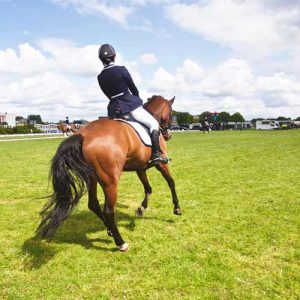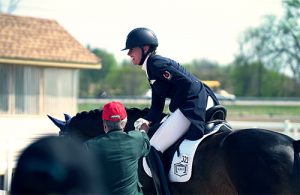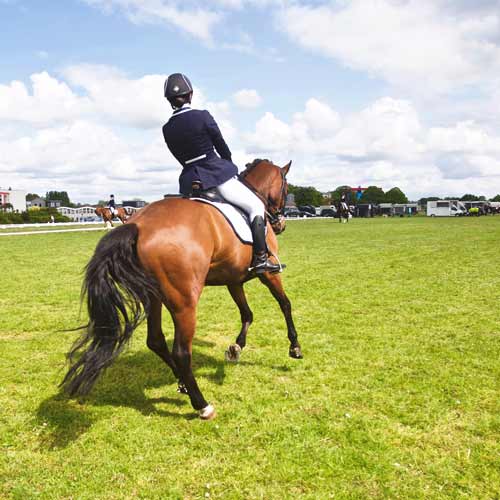Dressage
Dressage is the highest form of horse training. A sport where you are required to perform a sequence of tasks under instruction with your horse and receive scoring on how well each section is completed. Dressage requires a high level of skill and athleticism from both the rider and horse which leads to the graceful sport as we know it today.
It can be an extremely fun sport but also extremely addictive. If you do start climbing the ranks with your skills then prepare to be in it for the long haul!
There are a range of competition levels from amateur to the Olympic games, and not forgetting the FEI World Equestrian Games, but where can you start? Here we run through the various levels, what to wear and how to get started.
What levels are there?
There are many different levels in dressage. The starting point is introductory which will cover the basics such as walking, trots, circles and turns. The levels climb up to advanced and beyond, which are much more skilled movements with canter pirouettes, time tempi changes and many more magical moves. These are the different levels climbing in skill set:
 Introductory
Introductory- Preliminary
- Novice
- Elementary
- Medium
- Advanced Medium
- Advanced
- Prix St Georges
- Intermediare I
- Intermediare II
- Grand Prix
In British Dressage each level is split into three sections with Bronze, Silver and Gold. The section you compete in for each level depends on the individual rider and horse experience and the points scored in previous competitions:
- Bronze is for the entry level horses and riders that have less experience and have just started competing at that level with riders of the same ability.
- Silver is for those combinations that have achieved more ability at a level and gained some experience to move up.
- Gold is usually for riders who have experience at a higher level but are riding a horse with less experience, or for a horse and rider who have demonstrated that they are competent at a particular level.
How advanced do you need to be?
As you’re probably already aware, you can’t start dressage competitions with no horse riding experience. Firstly, you will need to complete basic horse riding lessons. Get used to the horse, learn how to tack up, mount and dismount the horse. Following on from there you’ll begin intermediate horse riding lessons and on completion at this stage is when you would be ready to start with your dressage adventures!
What to wear?
The dress code for affiliated competitions such as British Dressage is quite strict and must be adhered to in order to take part. This may change slightly depending on uniform colours or the level of competition.
- A hat is absolutely compulsory or a fine will be put in place – not to mention this is for the rider’s safety. The colours of the hat cover must be black, brown or navy.
 Jodhpurs are to be white, cream or beige.
Jodhpurs are to be white, cream or beige.- A white shirt with either a stock or tie should be worn.
- Riding Jacket
– At Preliminary level dressage to Advanced Medium level dressage a conservative coloured dark jacket, tweed jacket or uniform jacket should be worn. Subtle pinstripes or coloured collars and contrast piping to collar, lapels, pockets and vents is allowed.
– Advanced level dressage a uniform, tail coat or black/navy coat should be worn. - Riding boots are to be plain black or brown.
- Gloves should be worn in a light colour.
- Spurs are not necessary until Advanced level dressage and upwards.
- Body protectors are not necessary but can be worn.
Ready to get started?
Does it seem like you’re gallops away from dressage competitions!? Start with the basics, work on your skill with your horse and you’ll soon be climbing the ranks. If you’d like to join an affiliated organisation such as British Dressage, take a look at their site for the full details of how to get started.
Is your horse prepared for dressage? Take a look at the Mayo Mattress, providing supreme comfort for your horse while in the stable. Ensure a well-rested horse ready to take on the sport of dressage.

